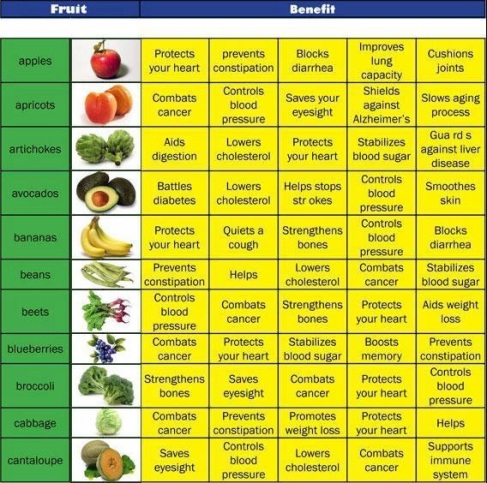I hate the word diet. There, I said it.
Allow me to explain myself. I am not against any dietary requirements or restrictions that are part of a medical treatment, plan, culture, religion or personal choice. Unless of course you are a cannibal, then not only am I against it, I’m glad I am a pretty fast sprinter.
I hate the word diet in general since its meaning has popularly become “foods we are taking away from you.” You can’t have any carbs! You cant have any form of fats! You can’t have any fruit! etc etc etc.
This by itself implies loss, and most people don’t handle loss very well.
Unless your doctor has stated “Lose this weight or you will die!” I am not one to fully take things away.
To me, a diet should be a way of eating that won’t drive you crazy with complex rules and unless medically ordered should not be severely restrictive.
Presupposing there are no medical conditions that come with dietary requirements such as with diabetics, I usually ask my clients to simply eat more natural foods and try to keep my guidelines fairly simple.
1. Water. This is your primary drink of choice. Green Tea and a daily glass of red wine are also acceptable choices. In the case of my workouts, I am personally offended when you bring an itty-bitty bottle of water to our sessions. No worries, you will only make that mistake once.
2. Reverse the order, eat more veggies than fruits. A good rule of thumb, make 1/2 your lunch and dinner plates multi-colored veggies and fruits, Your new favorite colors are dark greens, reds, oranges and the dark berry tones.
3. Use cooking ingredients your great-great grandparents could have used. Unless of course your great-great grandparents were Mr. and Mrs. Dr. Frankenstein, or cannibals.
4. Eliminate processed foods. (I know this one is tough) Try to eat as few things, if any, that come from a box, drive-through or greasy bucket. Honestly, other than fried chicken or shrimp is there any food you would want served in from greasy bucket?
“What’s for dinner tonight Honey?….Grilled Alaskan Red Salmon with a Baked Sweet Potato and a chilled side salad,,,,served in a greasy bucket.” The bucket sort of ruined the image didn’t it?
5. Eat and Purchase your food mindfully. Read the labels and look for the least amount of ingredients. If the first three are sugar and things you cannot pronounce you really shouldn’t be holding it in your hands in the first place. If possible, buy local source veggies and fruits or grow your own.
6. Take your time to enjoy your food and chew it thoroughly. Keep the TV off, put the phone and iPad away, be grateful for the for the food in front of you.
7. There are often healthier versions of a food you like.
8. The deep fryer is not your pal. It will turn any healthy food into an unhealthy food, or an unhealthy food into an even unhealthier food.
9. Enjoy the guilty pleasure foods in moderation. If it is date night, time with the children or movie night or whatever the event. Use a smaller plate and eat slower. I believe that if I allow you a small amount of treat foods you will learn to eat them in moderation. If I were to take them away fully you would binge at first opportunity.
10. Tell your personal trainer / fitness nutritionist the truth. We know when you are eating more than you tell us. The jelly and white powder from the doughnuts you ate to supposedly carbo-load before you hit the gym is still smeared in your goatee.
Tools to help you
1. Determine your Basal Metabolic Rate (BMR) and Daily Caloric Needs (DCN.)
http://www.bmi-calculator.net/bmr-calculator/
You burn calories 24 hours per day no matter what you’re doing. The BMR indicates what you burn over 24 hours if you stayed in bed all day, basically immobile. The daily caloric needs is adjusted based on your activity level.
BMR decreases with age, making it more difficult for older adults to lose weight than younger adults. Regular cardo/resistance exercise can increase your BMR.
The daily caloric needs is based on a formula that uses your BMR and applies an activity factor to determine your total daily energy expenditure (calories). Remember, leaner bodies need more calories than less leaner ones. Therefore, this equation will be very accurate in all but the very muscular (will under-estimate) and the very fat (will over-estimate.)
2. Know your calories and be honest about yourself.
My caloric needs (not adjusted for a lean body) sit around 3000 calories. This may seem like alot but don’t let the number fool you. That caloric need is for a person with a physical job that exercises frequently. A man of my age/height/weight who is sedentary needs 1000 less calories per day than I do.
A Big Mac, Large Fries and Large Coke at McDonald’s clocks in at 1350 calories, nearly half of my days total, and nearly all of my sedentary doppelgangers in a single sitting. This also presupposes this was all we ate….I’m sure we could have polished off another Big Mac or 1-2 pies no problem, maybe even re-filled our Cokes on our way out the door.
3. Be calorie poor and nutrient rich.
Once you know your BMR/DCN you can create a small caloric deficit. You may actually be eating MORE (or more often) low calorie nutrient rich foods and far less calorie dense nutrient poor foods such as Big Macs or total nutritional duds such as doughnuts and alcohol.



